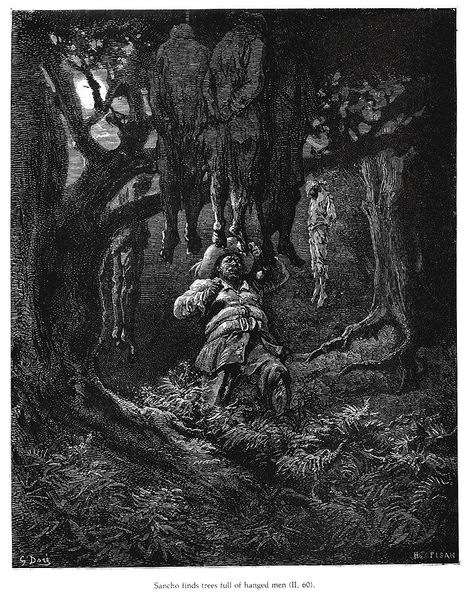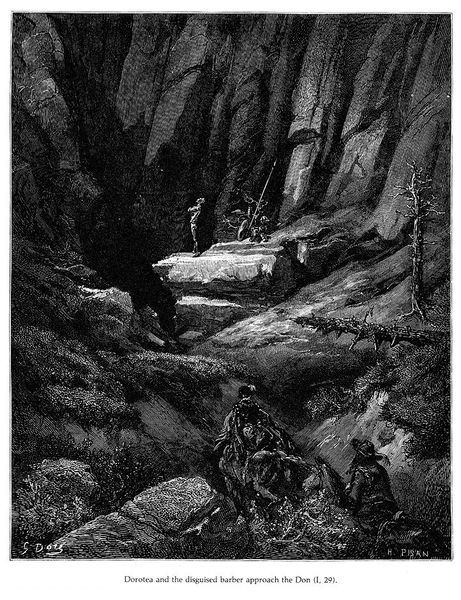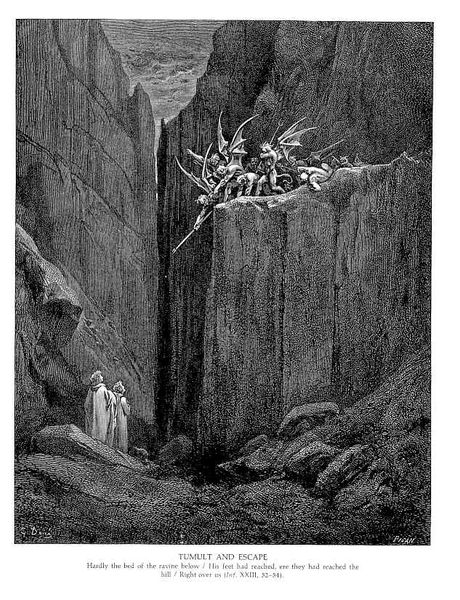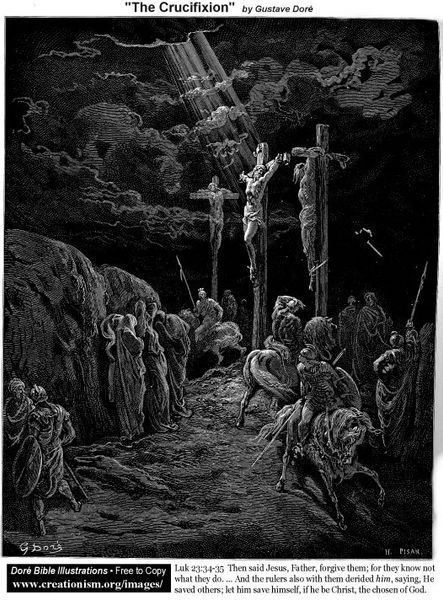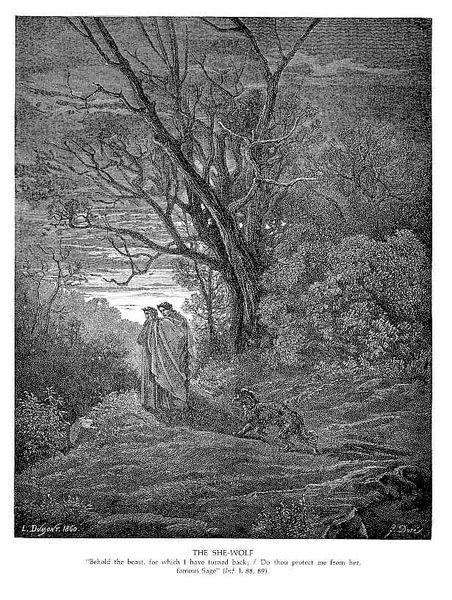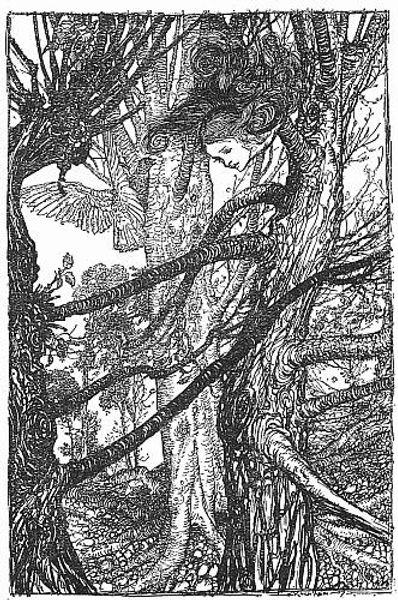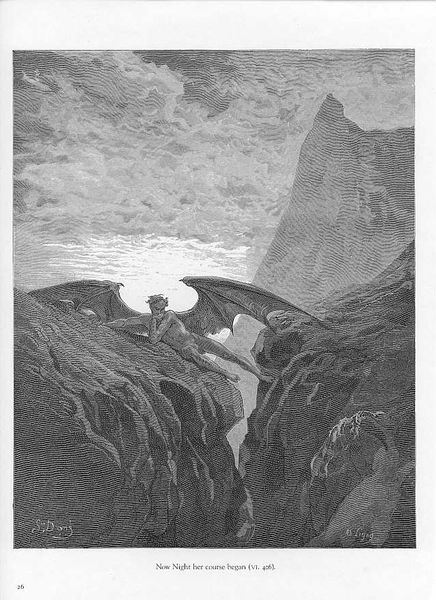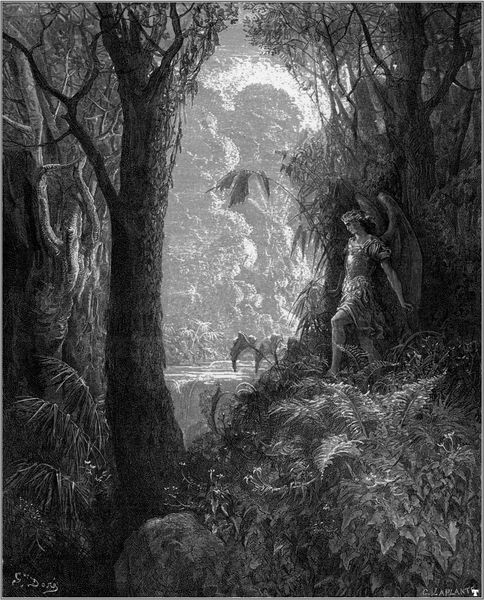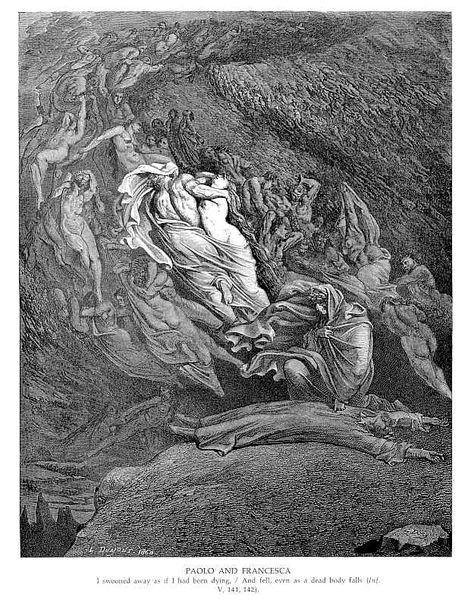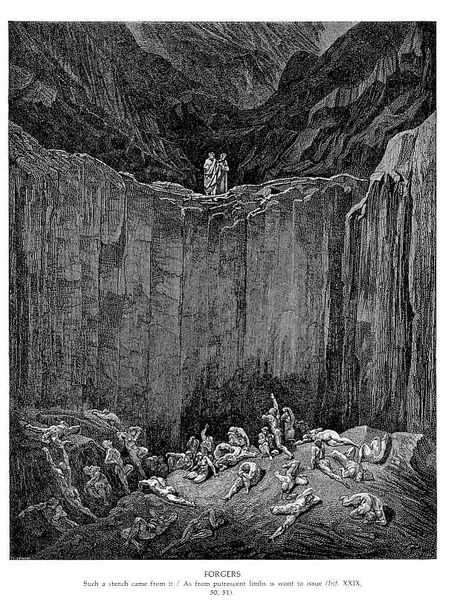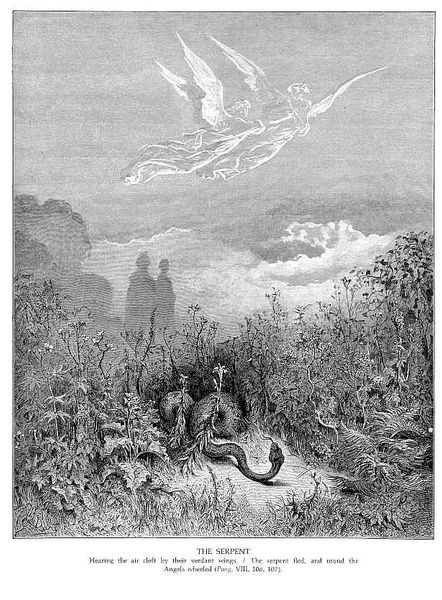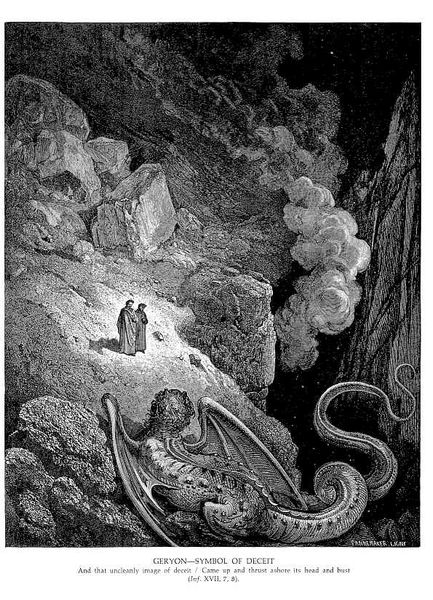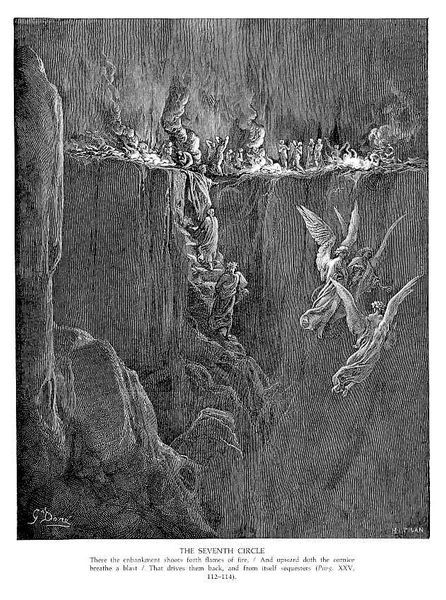
drawing, print, paper, photography, pencil, engraving
#
drawing
#
narrative-art
# print
#
landscape
#
figuration
#
paper
#
photography
#
romanticism
#
pencil
#
line
#
genre-painting
#
history-painting
#
academic-art
#
engraving
#
realism
Copyright: Public domain
Curator: This arresting piece is "The Lion," by Gustave Doré. It’s a stark black-and-white engraving, and its textures feel almost palpable. Editor: It has an ominous feel to it, almost suffocating. The intense, dense black ink creates a visually heavy landscape, the scale of which is punctuated by that tiny human figure. Curator: Indeed, Doré's masterful use of line emphasizes the sublime, reflecting Romanticism's fascination with nature's power. This imagery stems from the artist's illustrated edition of Dante's *Inferno*. The symbolic significance of a lion barring a man’s path indicates pride or ambition. It echoes how sins manifest as physical and psychological obstacles. Editor: Right, pride barring Dante's way on the Mount of Joy. But looking at the *making* of this… the density achieved purely through engraving! Imagine the labour intensive process and the skill required to carve those minute details. Curator: The visual language carries weight; Doré captures a critical moment, that internal struggle embodied by external threat. Lions traditionally represent kingship, nobility, but here, those qualities are twisted, menacing. The lion in that light is about flawed authority. Editor: And the means of production itself speaks to societal structures, no? Engraving required trained artisans, specific tools and paper—the consumption of which relied on industrial advancement, widening the gap between maker and patron. The printmaking processes become intertwined with social power. Curator: Absolutely. He uses stark contrasts to evoke this sense of turmoil but also hope for redemption from evil. Even the distant light, which contrasts against the inky blacks, symbolizes some degree of divinity and purity. Editor: Knowing how many impressions this image may have made—the availability of a single print to the broader public versus a unique painting for elite patronage, reminds us of its potential democratic appeal. Doré wasn't just illustrating; he was making his imagery *accessible.* Curator: Exactly. A powerful reminder of how the most potent symbols require meticulous crafting. Editor: It shows how vital an understanding of materiality and dissemination is to grasping art's societal impact, it offers an expanded understanding of this imposing landscape.
Comments
No comments
Be the first to comment and join the conversation on the ultimate creative platform.
